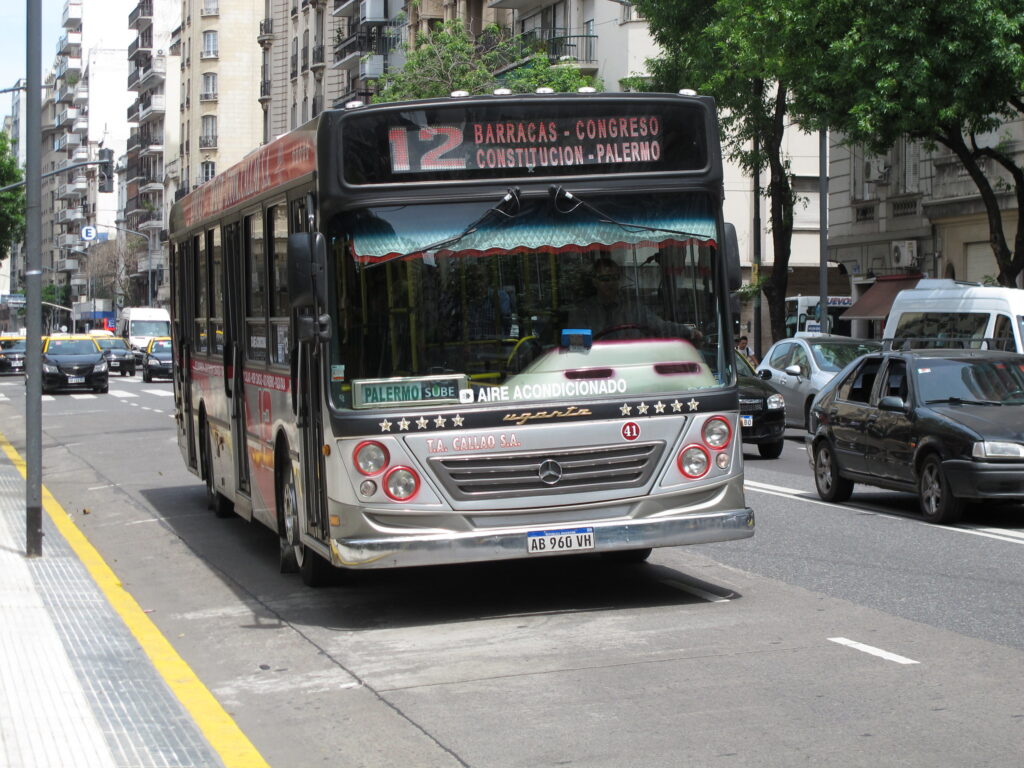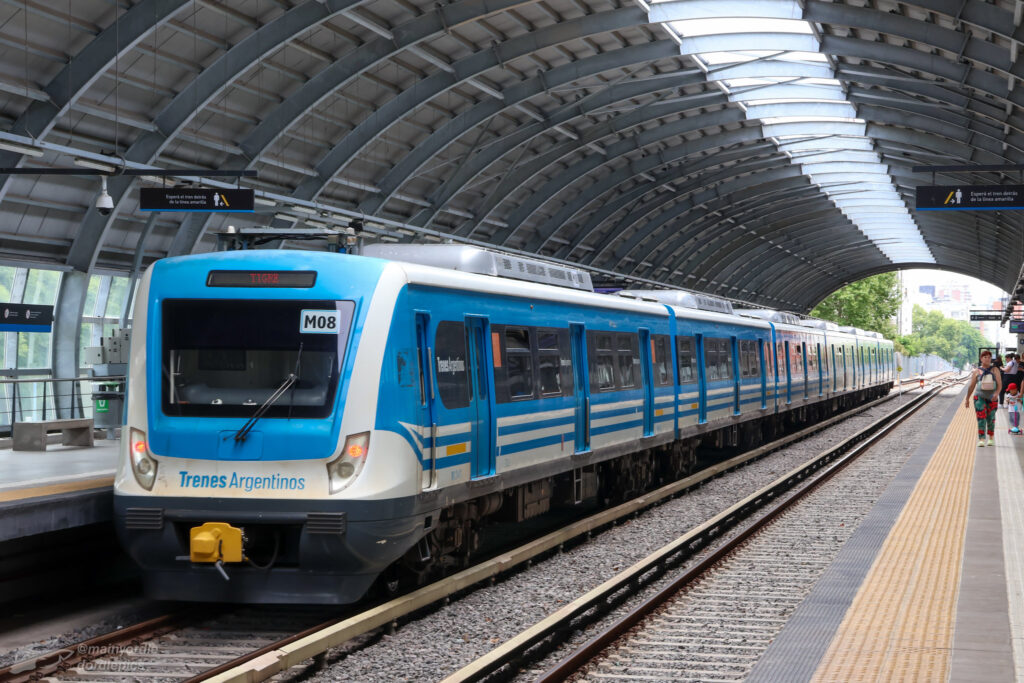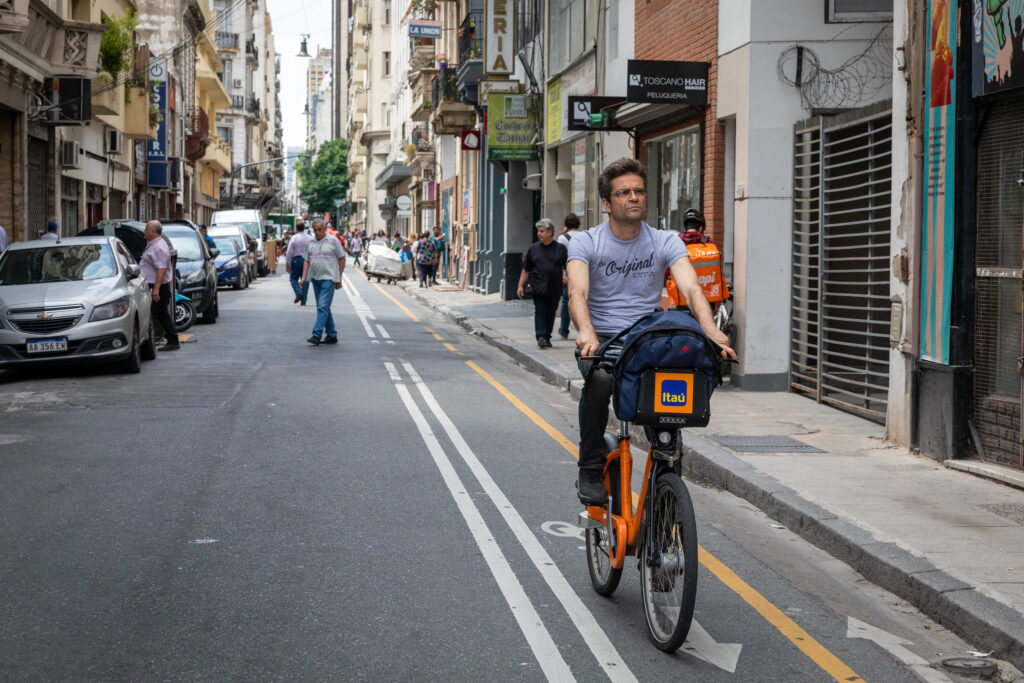Curious about the best way to get around Buenos Aires as a digital nomad, traveler, or expat? In Transportation in Buenos Aires: Which Means to Use According to Your Needs, ExpatPathways dives deep into the city’s extensive transportation options.
Whether you prefer buses, trains, subways, bicycles, or taxis, this guide will help you navigate the city’s bustling streets with ease.
Discover how to maximize your travel experience by choosing the most convenient, cost-effective means of transport tailored to your needs.
Important Criteria for Getting Around Buenos Aires
Buenos Aires offers many mobility options. Without considering car rentals, public transportation and private vehicles coexist with bicycles in a broad transportation ecosystem. Which means of transportation should you use to travel through Buenos Aires? First of all, consider the following criteria:
- Distance: Distances within Buenos Aires are generally not very long. However, when you include the Province of Buenos Aires and the Buenos Aires Metropolitan Area as a whole, distances can become quite significant.
- Reason or Purpose of Your Trip: Do you need to travel for work or study? Do you want to visit a specific place or explore a museum? The reason for your trip greatly influences how urgently you need to reach your destination. Not all modes of transportation are suitable for a hurried journey.
- Travel Costs: Traveling by public transportation in Buenos Aires won’t break your budget. However, using ride-sharing apps or taxis, while safe and direct options, can impact your expenses. Traveling cheaply and comfortably isn’t an oxymoron in Buenos Aires, although public transportation doesn’t always offer both characteristics simultaneously.
- Do You Have a SUBE Card?: Without this card, forget about traveling by train, subway, or bus. The SUBE card is the only accepted payment method for public transportation in Buenos Aires. Although there are projects to diversify payment methods, currently, without a SUBE card, you won’t be able to travel on the mentioned transportation options.
Transportation in Buenos Aires: Which Means to Use According to Your Needs
Bus
The bus system in Buenos Aires is an essential component of the city’s public transport network. With over 200 lines covering the Metropolitan Area of Buenos Aires, buses connect the city with the surrounding Province of Buenos Aires. It is rare to find a street without at least one bus line passing through it, demonstrating the extensive reach of the bus fleet.
You can typically find a bus station within 200 meters of wherever you are, making it an ideal transportation method for reaching specific neighborhoods or zones within Buenos Aires at an affordable price. Despite being relatively fast, buses can experience delays during peak hours (typically between 9 a.m. and 12 p.m., as well as 5 p.m. to 7 p.m.) due to traffic congestion. However, if you’re looking for a budget-friendly, convenient transport option, buses are your best bet.
You will always find a bus line that can take you to your destination. Just remember to plan accordingly if traveling during rush hours.

Train
The railway system in Buenos Aires is a historic landmark of the city, initially conceived for commercial purposes to export primary goods from Argentina via the Buenos Aires Port. Over time, it evolved into an economical passenger transportation alternative in the Metropolitan Area of Buenos Aires.
The train system is an affordable way to travel within Buenos Aires or to reach the Province of Buenos Aires in the south, north, or west directions. Trains provide a fast transport option, free from the traffic congestion that typically plagues Buenos Aires avenues during peak hours.
The train service runs until late at night and resumes operations early in the morning, enabling travelers to journey from the city center to the outskirts and back in minutes. However, it’s essential to remain vigilant, particularly during high-traffic hours.

Subway
Buenos Aires boasts one of the oldest subway systems in the region. For over 100 years, the network has expanded significantly, although not quite to the extent of official projections. Like the railway lines, the subway lines stretch from east to west across the city, with some lines also extending north and south.
The subway is one of the fastest transportation options in Buenos Aires. Having a subway station nearby is excellent news, as it allows you to navigate the city with minimal walking. The H and C lines provide vertical routes from the south to the north of Buenos Aires, and vice versa.
Signage within the subway system is clear, and it’s challenging to get lost in the stations and connections, which allow passengers to switch lines without exiting to the surface or paying for another ticket. Like buses and trains, the subway system uses the Sube Card network, making it very accessible. It’s the best option for getting around the city quickly, but sometimes you’ll need to combine the subway with buses, trains, or walking to reach your destination.
Bicycle
Bicycles are becoming an increasingly popular means of transportation in Buenos Aires. The city’s government has actively promoted cycling as an environmentally friendly mode of transportation over the past decade. Dedicated bike lanes (ciclovías) on streets and avenues throughout Buenos Aires provide cyclists with a safer environment away from cars, buses, and trucks.
Buenos Aires also offers a public bike-sharing system (Ecobici), allowing both tourists and residents to use bicycles through an app-based registration. With stations scattered throughout the city, Ecobici makes it convenient to travel quickly and affordably. Renting a bike, buying a new or used one, or taking advantage of the public system can save you money, especially when exploring various parts of the city for tourism.
A crucial tip for biking in Buenos Aires is to avoid parking your bike on the street, as bicycle theft is relatively common. Always keep your bike within sight or locked securely. Stick to bike lanes and follow traffic signals, pedestrian crossings, and directional rules. If riding on a street without a bike lane, stay on the left side and avoid the right lane.

Taxi
Taxis are always a viable option when living in or visiting Buenos Aires. Despite the rise of ride-sharing apps like Uber and Cabify, taxis have adapted to the new reality of passenger transport. They remain an ideal choice for quick trips when you’re in a rush and can’t afford to wait for a private vehicle.
Taxis operate throughout Buenos Aires, often available even late at night, unlike other transport modes like trains and subways. Though ride-sharing apps have gained popularity, taxis are still a convenient and cost-effective option. They are particularly useful when you need to travel urgently or at night and don’t have time to request a vehicle through Uber or Cabify.
Ensure the taxi displays the vehicle, license, and driver information visibly. Also, check that the driver activates the fare meter at the start of the journey.
Ride-Sharing Apps
Ride-sharing apps have revolutionized transportation in Buenos Aires for over a decade. After a somewhat tense period between companies like Uber, Cabify, DiDi, and inDrive and traditional taxis, both transport services now coexist peacefully.
Ride-sharing apps are often the first choice for many travelers when they need a private vehicle quickly with multiple payment options. Although users sometimes complain about high fares (driven by supply and demand), the service is recommended when you need to travel to a specific location and prefer to avoid public transport or hailing a taxi on the street.
While using ride-sharing apps, always verify the driver and vehicle details and keep your GPS and map open to ensure the route taken is correct. During peak hours, securing a ride can be challenging, so plan accordingly.

(Featured Image Source: UrbanShift/flickr.com)


